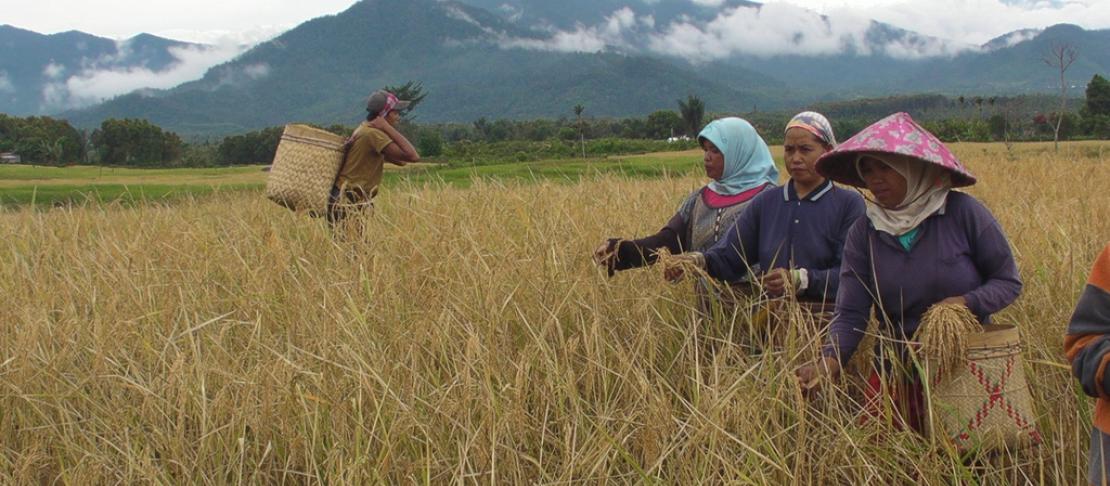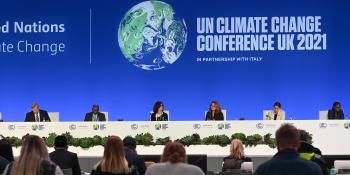Tropical Peat Swamp Forests: how land use change affects methane and carbon emissions

Agriculture is a major source of greenhouse gas emissions and these sources are increasing rapidly in tropical countries. Our researchers are working together to quantify the effects of agriculture on the atmosphere as a first step in working towards lower emission production systems.
One of the most potent greenhouse gases from agriculture is methane. Methane’s effect as a greenhouse gas on global warming is 25 times greater than that of carbon dioxide and it is the second most important greenhouse gas in the atmosphere after carbon dioxide.
Learn more: Possible to reduce agriculture emissions while maintaining yields?
When we talk about peat lands, one of the more severe issues we need to combat is reducing methane emissions. Peat, because of its waterlogged, anaerobic conditions, transforms a small amount of organic matter into methane. Methane is emitted from the peat to the atmosphere at different rates depending on the type of land use.
In Southeast Asia, 25 percent of deforestation occurs in peat swamp forests and is driven by wood production and a demand for land for agricultural production. Techniques that facilitate deforestation, such as drainage ditches which lower the groundwater level, may affect peat methane emission fluxes.
A study by Kristell Hergoualc’h and Louis Verchot at the Center for International Forestry Research (CIFOR), with support from CGIAR Research Program on Climate Change, Agriculture and Food Security (CCAFS) examines the effects of tropical peat land conversion on the fluxes.
The study “Changes in soil CH4 fluxes from the conversion of tropical peat swamp forests: a meta-analysis” found that land use change resulted in a very large decrease in methane emissions when peat swamp forests were converted for agriculture, with the exception of rice cultivation, where emissions remained high. However, the decrease in methane emissions is not large enough to offset the carbon emissions that occur from increased peat decomposition that also occurs with land use change.
Large carbon stores are built up over millennia in peat soils because anaerobic conditions that keep organic matter from decomposing. Peat lands in tropical regions contain about three percent of global soil carbon. But deforestation in peat swamp forests involves drainage ditches and cutting canals to transport harvested trees, which increases aeration and leads to peat decomposition and the release of vast amounts of carbon dioxide.
The authors looked at studies of methane in seven of the most common land uses of Southeast Asia. By analysing the relationship between methane fluxes and land use, they were able to compare the levels of methane flux before and after land use change. They found that of the seven land uses, six demonstrated a very large decrease in methane fluxes compared to carbon dioxide release.
This research will help scientists develop better regional budgets of greenhouse gases to improve understanding of how human activities are affecting the climate. It will also help countries improve their reporting of emissions to the United Nations.
Further research needs to be done on changes in soil nitrous oxide to compare it to findings on methane to gain a more holistic understanding of how land use change affects greenhouse gas emission.
However, it is still clear that the atmospheric consequences of land use change in peat lands are high. Though methane fluxes decrease as a result of changing land use, much more carbon dioxide is released through decomposition.
Tropical peat swamps are key carbon storing landscapes, but the conversions of peat swamps into plantations of palm oil and Acacia are creating an ever-growing release of greenhouse gases.
Peat swamps will continue to play an important part in the discussion about reducing emissions from deforestation and forest degradation.
More on palm oil on our blog: Commodity agriculture: supply chains and sustainability
Manon Verchot worked as a Communications Intern based in Nairobi, with CCAFS Theme 4.1: Linking Knowledge with Action. Get the latest updates from East Africa by following the program on Twitter: Cgiarclimate_ea



